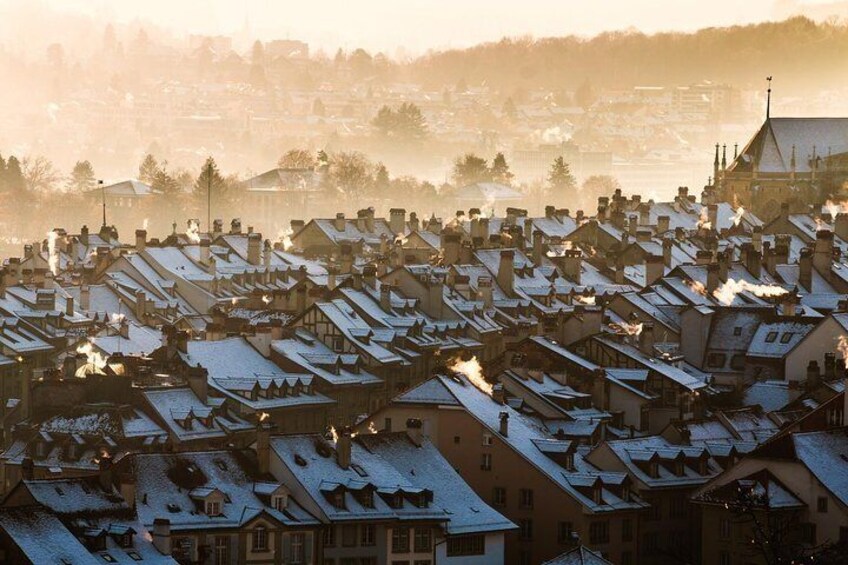Bern (Pass by)
Our tour will start with a sight towards the old town of Bern and the name givers of the city: the bears that inhabit the Bear Pit and Park (Bärengraben), next to the Nydeggbrücke and the River Aar. The Bärengraben is fundamental for Bern. Bears are the symbol of both the city and surrounding canton.
Then we will cross the oldest access to Bern, the "Untertorbrücke", through the "Matte". Here you will find out why this quarter is also called the "Black Quarter".
Next stop is the Reformed Nydeggkirche (meaning "Lower corner"). It sits where the city was founded in 1191. Legend states that Duke Berchthold of Zahringen named the city after the first animal he killed during a hunting expedition: Bern, or Bear in old German. The original castle was destroyed in the 13th century and replaced by the Nydegg church.
Now we will get to the Münsterplatz, the square in front of the Cathedral and is part of the UNESCO Cultural World Heritage Site. From here we will enjoy a view of the Berner Münster (Cathedral of Bern). It is a Swiss Reformed cathedral (or minster) built in the Gothic style and boasting a tower of 100.6 m (330 ft) of height, making it the tallest cathedral in Switzerland and is a Cultural Property of National Significance. It was built as a symbol of the growing power of this city-state, designed to awe the citizens as well as foreign visitors.
Let us get our feet moving towards the Zähringerbrunnen fountain, another important monument of the city and an UNESCO World Heritage Site. Built in the 16th century to celebrate the founder of Bern, we will see a statue of a bear in armour together with a bear cub at his feet.
A few steps away we get to one of the highlights: the Zytglogge clock tower. Built in the 13th century as a gate tower for the city's western fortifications, it was used over the centuries as a guard tower, prison, clock tower, centre of urban life and civic memorial. It is one of Bern's most recognisable symbols, along with its 15th-century astronomical clock. The clock goes through a small dance every hour. Besides, how often do you see an 800-year-old clock?
We move to see the gruesome Kindlifresserbrunnen, which translates to "Child Eater Fountain'' or "Ogre Fountain." The statue is of a seated ogre swallowing a naked child, representing a figure from folklore that scares disobedient children. Then again, we will get to another fountain, Pfeiferbrunnen, built in 1545/46 by a Swiss Renaissance sculptor.
No medieval town is complete without a Käfigturm. This medieval tower was built around 1259 as the main gate of the second city wall and was used as a prison. The current clock tower bell was added to the tower in 1643, and it’s unusual history will be made clear by our guide.
Time for another square, the Bärenplatz, or Bear Square built in the 13th century. In the 16th century the bear pit was moved to its current position and the northern section was filled in to become a market square.
Finally, we will reach the heart of Federal Square, where the Bundeshaus stands, also known as or the Federal Building. This is the parliament of Switzerland and the seat of government. In the façade we see sculptures that depict the origins of the Swiss Confederation. Here the tour will end, with an explanation of modern times Switzerland and how a country with several languages and Canton, is very efficient and decentralized.
Our guide can also take you back to the nearby high street, for some on your own exploration of the old town of Bern.


